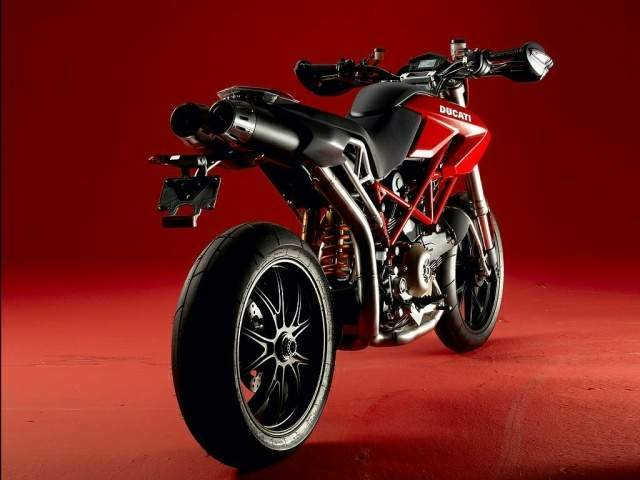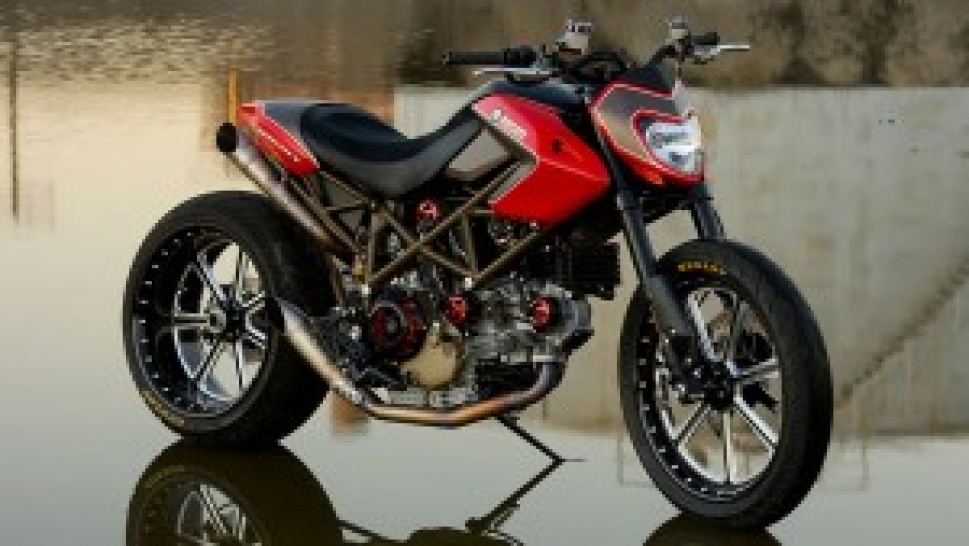Engine:
The new 821cc, 8v, liquid-cooled engine (a ‘stroked’ 796 unit) lacks the lowdown grunt of the old 4v, air-cooled 1078cc motor – there’s no substitute for cubes, after all. But there’s still plenty of smooth, predictable power. Producing 110bhp, it’s more powerful than the 796 and 1100 Hypermotard. There’s plenty of oomph to play with at low speeds, which is perfect for wheelies and mucking about. The real-world speed of a bike like this, with no wind protection, is around 80mph, so big bhp figures aren’t needed. The throttle response is excellent in its Urban and Touring riding modes, but in Sport mode it’s too aggressive and more suitable for the track. Water-cooling has made the old oil cooler redundant and there’s a wet, cable-operated slipper clutch. Intervals for the valve-clearance service are increased to 18,000-miles
Quality and Reliability
Build-quality and attention to detail is superb. Modern day Ducatis are reliable, despite their reputation from the dark days of the 60s, 70s and early 80s, where dodgy electrics would leave you stranded on the side of the road. Check our online reviews of the original Hypermotard to see owners’ comments.
Ride and Handling
Unlike the previous model, you’re sat further back from the front of the bike and the pegs have been brought forward, too. This less aggressive riding position is more natural and comfortable on the long haul. The old twin exhaust cans have been replaced with a single side-mounted unit to reduce weight and impormve handling. A longer swingarm makes the Ducati less ‘slappy’ riding across bumpy terrain and new 43mm Kayaba forks and Sachs rear shock give a plusher ride. New cast aluminium monobloc Brembo calipers are a big improvement – not that the lightweight Hypermotard ever struggled with braking power. It’s agile, flickable, stable in fast corners and you get a good feeling of grip from the tyres and through the chassis. The Hypermotard lets you have loads of fun, road or track. It only weighs 3kg more than the original model, despite the extra weight from the new radiator, hoses, electronics and ABS system.

Value
For what is basically a toy for putting a smile on your face for a few hours on a Sunday, the Hypermotard is a lot of money. But this is the supermoto you can do some distance on, or tackle a city commute. It’s refined, safe and beautiful to behold. If the supermoto style is your thing, you’ll have fun on the Hypermotard, if they’re not, you’re still better-off looking elsewhere.
Equipment
Unlike the original Hypermotard, this model comes with lots of toys. A new ride-by-wire throttle system allows an eight-stage traction control system for the first time, as well as three riding modes. In each mode there’s varying levels of power, throttle response, traction control and intervention from the Bosh 9MP ABS system. Conventional mirrors on stalks replace the old flip-out bar-end mirrors and the impractical 12-litre fuel tank makes way for a 16-litre item.
http://www.ducati.com/bikes/hypermotard/index.do
http://rideapart.com/2013/06/rideapart-review-2013-ducati-hypermotard-sp/




Share the News